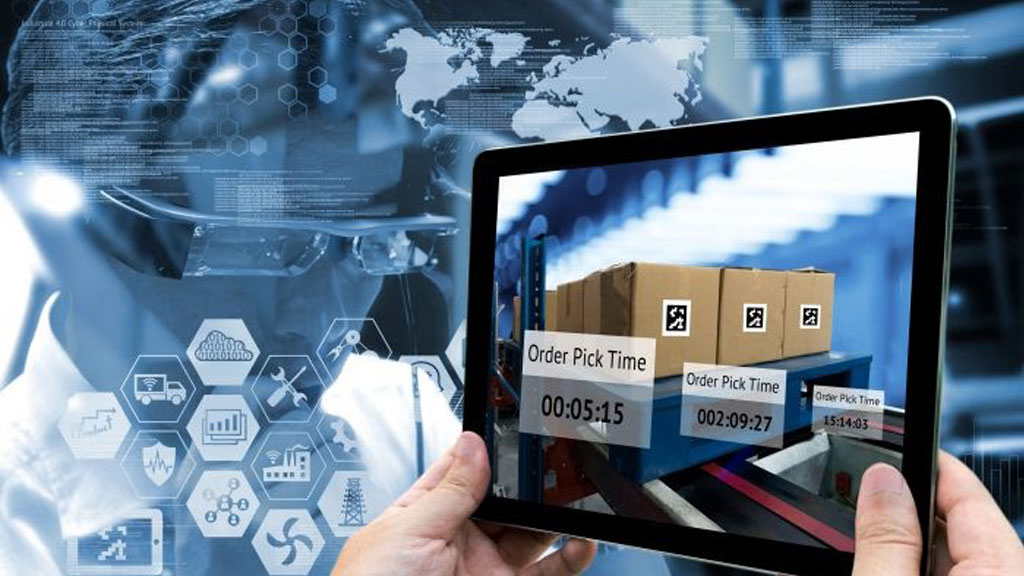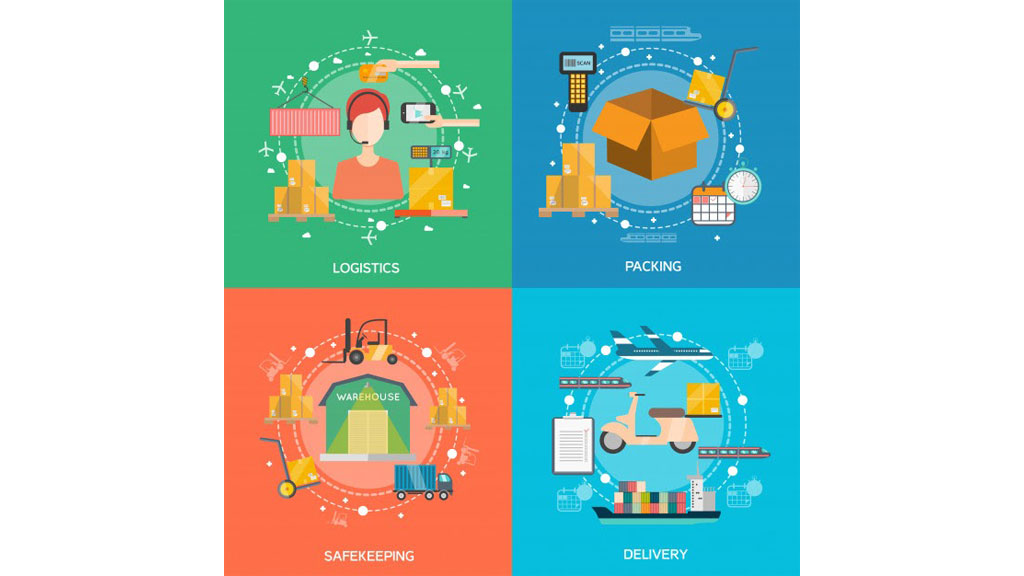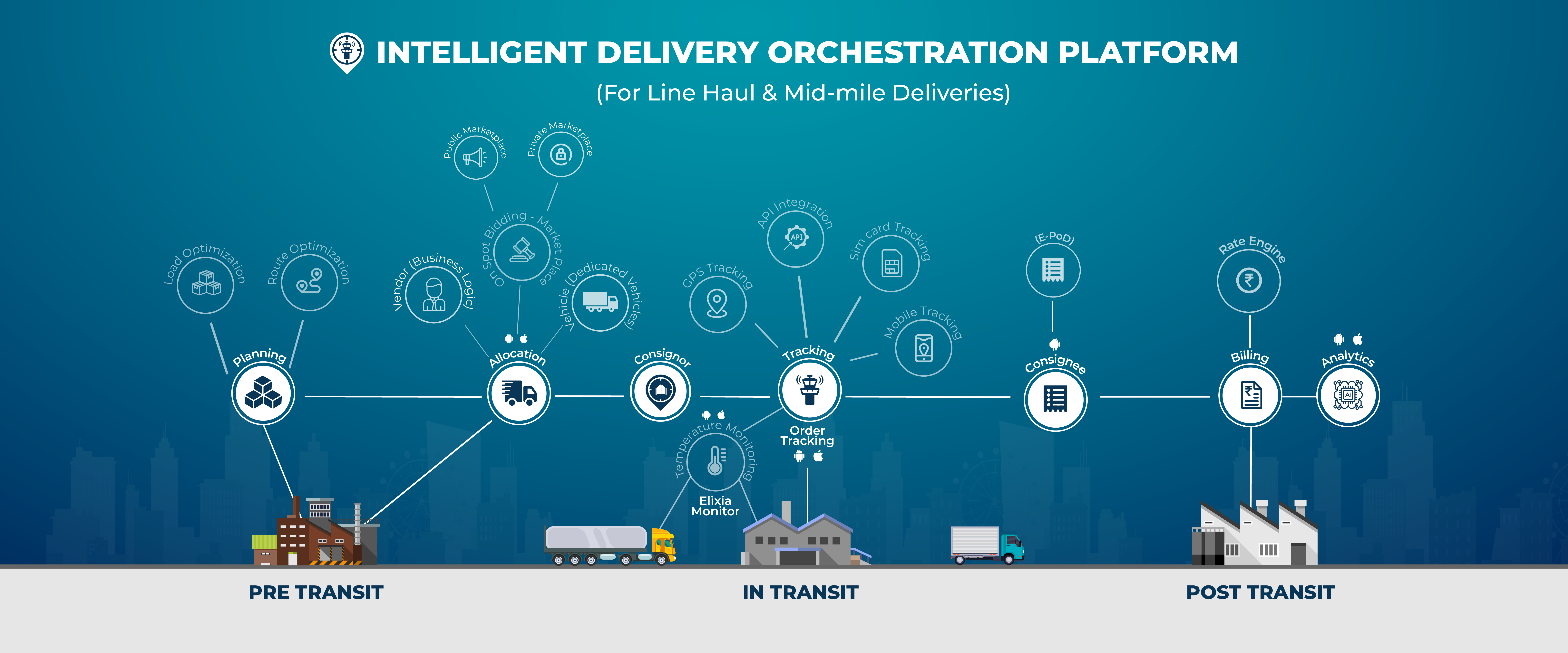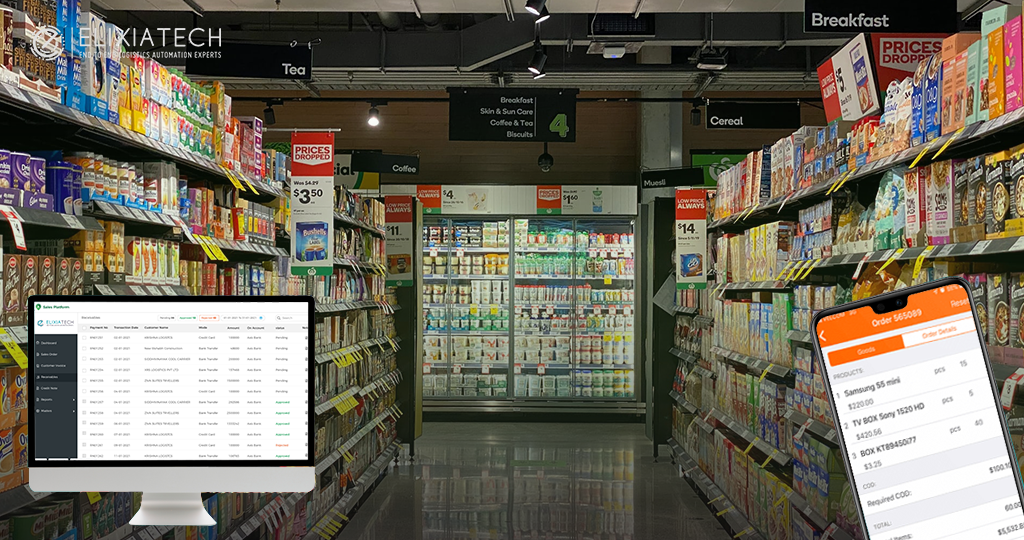
OPTIMIZE SUPPLY CHAIN COSTS & GENERATE MORE PROFIT
Working capital is the driving force of every organization and all its three components; inventory, accounts payable and accounts receivables directly or indirectly fall under the umbrella of the supply chain. Thus, the success or failure of the supply chain ultimately affects the health of the company. And therefore, it makes perfect sense to analyze and reduce supply chain costs.
As per the Logistics Bureau, if the net profit on sales is 5% then a reduction in supply chain costs from say 9% to 4% will double up the net profits.
Even then some of the big companies have overlooked the importance of reducing supply chain costs. Hackett Group in 2006 reported that the 2000 largest companies in US & Europe have more than $1 trillion dollars unnecessarily tied up in the working capital. The main reasons are early payment to suppliers, late payments from customers & slow movement of inventory through the supply chain.
Unfortunately, the situation still exists across all industries. Benchmarking success did a survey and found that supply chains accounted for 9.8% of the sales as compared to the expected 5.7% ratio.
In this blog, we shall be discussing how can one start to think in the direction of cost reduction by questioning basic day-to-day operations. And by the end of it, you should be able to identify at least one area for saving your supply chain costs.
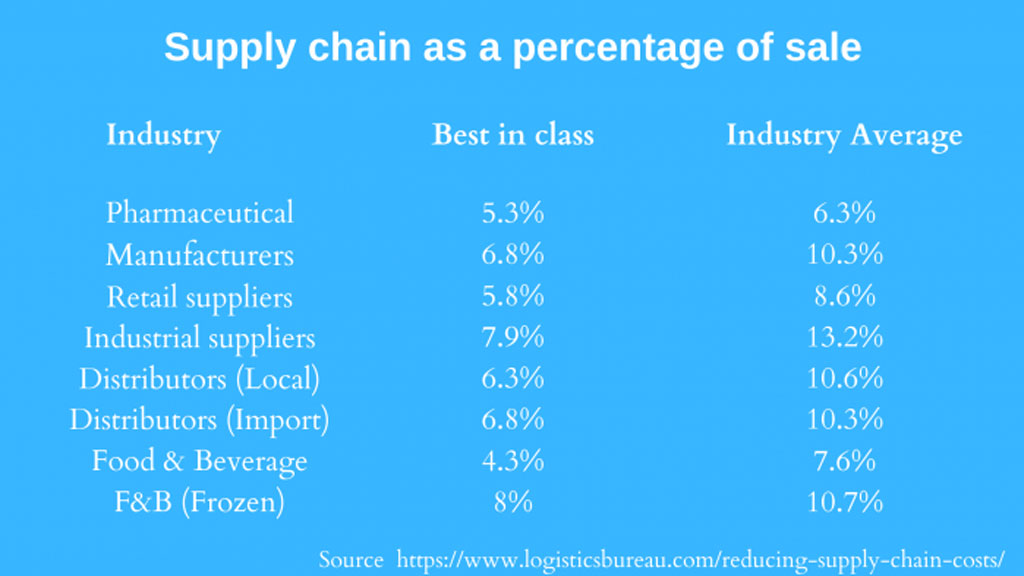
Why do we miss out on reducing supply chain costs?
Supply chains are the most complex structures in any organization. A high-performing supply chain is always a result of the successful integration of people, processes & systems. But the reality is just the opposite, mainly because of two reasons.
Departments working in silos with little or no internal communication – Every department works to achieve its individual goal of efficiency & cost reductions. This, in turn, adds up to the cost somewhere else in the supply chain.
There is no real-time information across the supply chain – Lack of timely data leads to delayed and incompetent decisions. Douglas McKibben, Vice President of research with the Gartner consultancy says there are two aspects to the supply chain, physical and financial and we need information for both of these.

Let’s dig deeper into the supply chain!
With the ever-growing demand for customer experiences, better products, services, and customized experiences, supply chains are becoming more and more complicated today. This is where micro-productivity can help you unravel the process and finally free up the cash flow.
So, you need to start by breaking down the complex processes into small manageable tasks and studying each one of them meticulously. This will help you identify the cash-blocked functions and in turn, will help you reduce supply chain costs.
Let’s start with the most basic breakup of the supply chain process.
Order Management -> Logistics Plan -> Shipment Delivery
Order Management
Businesses are growing day by day and so is the competition. Still, almost 43% of businesses say they are not tracking their order/inventory at all. Their processes are still manually driven and are adding to more errors & mismanagement resulting in monetary losses to the company.
Here is a generic list of questions that you can ask yourself to know where your most important assets (man & money) are stuck.
- Are you tracking your inventory in real time? If yes, to what extent are you doing it manually?
- How many people have you employed only to follow up & track inventory?
- How many man-hours are going into managing orders and inventory?
- Is there real-time communication with all relevant departments regarding order status?
Logistics Plan
This particular section accounts for the highest costs of your supply chain. Reasons being: interaction with external agencies like transporters, goods moving out beyond our scope of management, and management of additional costs of fuel, labor, vehicle, etc.
There are numerous points that you can analyze in this section & thus reduce your supply chain costs optimally. Here’s a list of questions to kick-start your thought process to find out areas where you might be either spending or losing money extensively.
- How do you select your transport vehicles? Is the vehicle too big/small or perfect for your shipments on all the trips?
- How are you selecting your transporters? Are you maintaining their performance history?
- How do you track & trace your shipments?
- What mechanism do you use to deal with last-minute order or peak season spike? Do you manage things manually or through a system?
- How do you track transportation delays, stoppage, temperature & humidity (for perishable products)?
- How do you manage the driver’s expenses?
Shipments delivery
Out of the three, this stage blocks the cash flow for the longest period of time. So, in order to reduce supply chain costs, one should definitely look into the activities of this stage.
- How long does it take to process supplier payments after the shipment is delivered?
- When do you confirm the status of the delivered shipments?
- How do you manage payment terms in case of shortage, excess, or damage of delivered items?
- Are you managing all the accounts manually?
- How do you maintain the financials related to the supply chain? Is there a single platform or do you coordinate with multiple departments?
- Who is responsible for sending payment reminders?
- How do you check on suppliers giving deferred payments?
- How do you maintain a track record of vendors/suppliers?
You can easily understand where your money is blocked just by analyzing these three operational areas. It may be in the form of avoidable expenses due to loss of man-hours & productivity because of manual or redundant jobs, lack of automation in financial areas where human errors result in bigger losses or mismanagement of basic operations resulting in additional resource consumption.
The fastest & most efficient way of reducing supply chain costs
According to the 2019 McKinsey report, 63% of respondents reported an increase in their revenue by almost 10% after the adoption of Artificial Intelligence in their day-to-day operations. AI when implemented in supply chain management can help you gain better control, visibility & coordination between the processes. As a result, you tend to improve the productivity of your workforce and reduce your supply chain costs.
End-to-end delivery orchestration platforms are the perfect example of AI’s application in the supply chain. This single integrated solution can help you gain end-to-end visibility from production to delivery of products. With its successful implementation, companies can save on logistics costs, increase workforce productivity, improve inventory optimization, and order fulfillment, and get a perfect synergy between all the departments.
Elixia’s Intelligent Delivery Orchestration Platform
Elixia’s Intelligent Delivery Orchestration Platform provides data-driven, end-to-end insights, and ensures visibility across the supply chain. The solution is thoughtfully worked out by categorizing the whole process into three phases: Pre transit – to ensure an end to end planning visibility, In transit – to result in improved transparency, visibility & coordination & Post transit – to financially close the trips in the system & record the entries.
This solution provides actionable business intelligence using Artificial Intelligence and Machine Learning and thus, helps in reducing supply chain costs by giving better control over the supply chain process.
